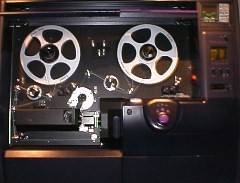| Company type | Private |
|---|---|
| Industry | Digital cinema |
| Founded | 1927 |
| Founder | John Logie Baird |
| Defunct | July 24, 2012 |
| Fate | Liquidation; assets and intellectual property acquired by Blackmagic Design |
Cintel was a British digital cinema company founded in 1927 by John Logie Baird and based in Ware, Hertfordshire. The early company was called Cinema Television Ltd. Cinema Television was sold to J Arthur Rank Organization renamed Rank Cintel in 1958. It specialized in the design and manufacture of professional post-production equipment, for transcribing film into video or data formats. It was formerly part of the Rank Organisation. [1] Along with a line of telecines, Rank Cintel made 3 tube RGB color video projectors in the 1960s.
Contents
Their main products were based on either cathode ray tube (CRT) Flying-spot scanner or charge-coupled device (CCD) technology. ITK founded in 1994, also made upgrade products include the TWiGi system, the SCAN’dAL and the Y-Front. [2] [3] [4]


Many movies and TV shows for TV were transferred from film to TV on Cintel Telecines. Cintel saw reduced sales with the introduction of Spirit DataCine in 1996. The business was in administration until its announced liquidation. On 24 July 2012 Blackmagic Design acquired the assets of Cintel. [5]

